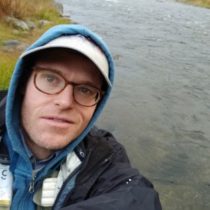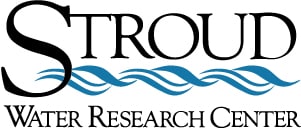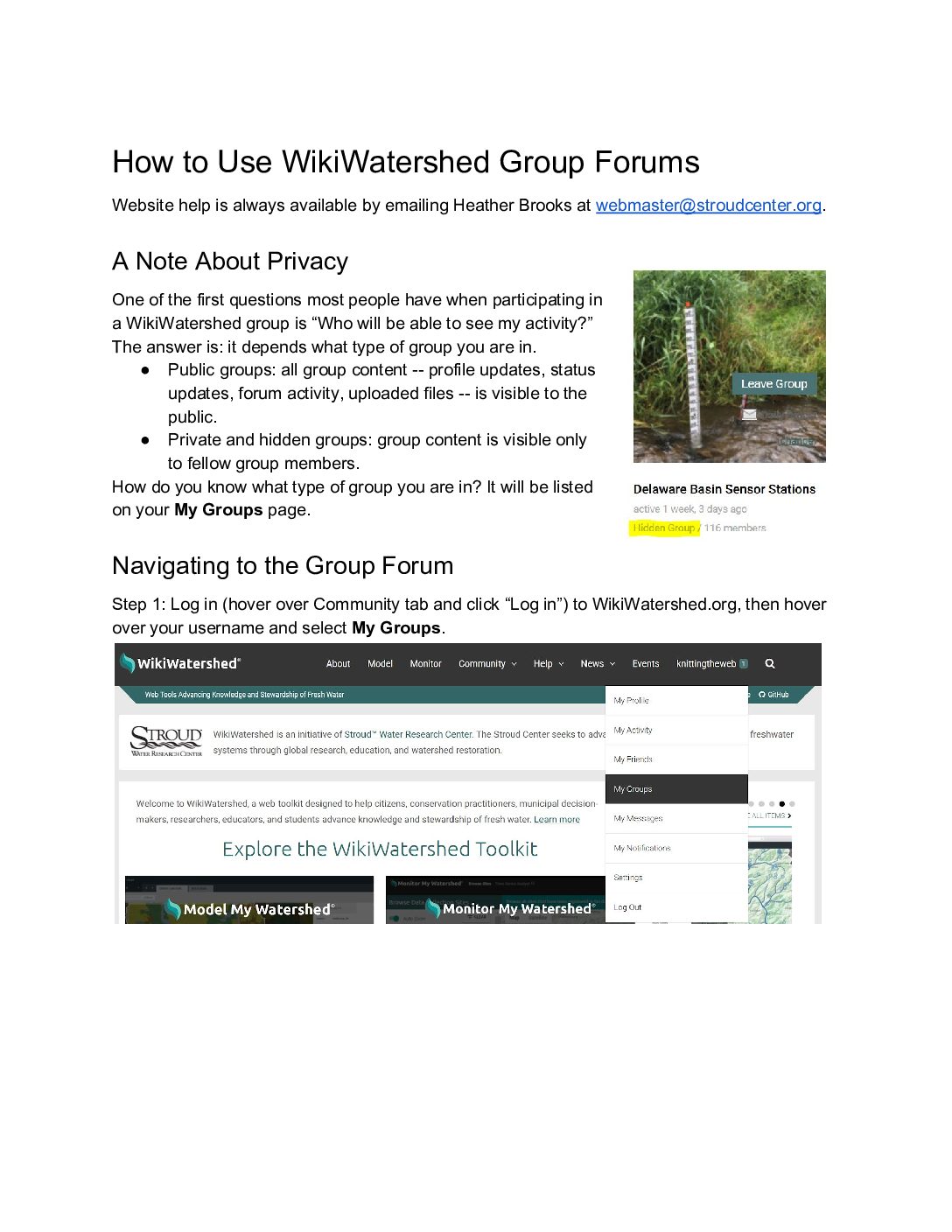Updates
- This topic has 35 replies, 2 voices, and was last updated 2:48 PM on 2021-09-02 by David Bressler.
-
AuthorPosts
-
2018-03-08 at 10:06 AM #151931
 David BresslerParticipant
David BresslerParticipantDe-icing salt boosts safety during storms, but it poses a threat to fresh water: https://stateimpact.npr.org/pennsylvania/2018/03/07/de-icing-salt-boosts-safety-during-storms-but-it-poses-a-threat-to-fresh-water/#more-55010
2018-04-13 at 9:51 AM #152918 David BresslerParticipant
David BresslerParticipantRegarding the winter time grab sample processing – we are in a state of transition in terms of equipment and researchers so there has been a delay on processing of these samples. Apologies. We will be in touch and get these data to you as soon as possible. In the mean time please feel free to be in touch with questions and issues.
2018-08-13 at 3:08 PM #153037 David BresslerParticipant
David BresslerParticipantFYI the website where sensor station data can be custom plotted data.wikiwatershed.org (or data.envirodiy.org – they’re the same) has been updated and is becoming more and more user friendly and useful for inspecting and displaying data. This is an evolving site and I’m posting this update now because data.wikiwatershed.org now has zooming capacity similar to drwisensors.dreamhosters.com and now has some improved display features (e.g., when you hover over the graphs the individual values of data points are displayed). You can also overlay sites and parameters on one another (e.g., you could display depth, conductivity, and turbidity on one graph; you could display Site A conductivity and Site B conductivity on same graph). You can zoom in on graphs by hovering the cursor and scrolling (using your mouse wheel) over the graph or over any of the axes. This zoom feature makes it much more functional for inspecting data and looking at short specific periods of time in the data stream. data.wikiwatershed.org is fairly robust and it’s still in the works but if you take some time to figure out how to use it, it should be a good tool for looking at the time-series data, comparing parameters, and comparing sites.
2018-11-26 at 9:52 AM #153116 David BresslerParticipant
David BresslerParticipantA comprehensive manual is now available: https://www.envirodiy.org/mayfly-sensor-station-manual/. It includes programming, building, installing, and managing an EnviroDIY Mayfly Sensor Station.
2019-01-04 at 11:54 AM #153181 David BresslerParticipant
David BresslerParticipantAt the recent user group workshop (12/11) at The Watershed Institute in Pennington, NJ we reviewed the following:
- Monitor My Watershed – this will be replacing the Dreamhosters data site; click “Browse Sites” to see a map of all sites; click on individual site to view info about the site and display data (click Time Series Analyst)
- Quality Control – generally recommended on a quarterly basis (download data every two weeks to month). See italics on Field Visit Data Sheet (in Uploaded Files tab)
- Reprogramming data loggers – current loggers are sending data directly to the Dreamhosters site; Stroud Center (Shannon Hicks and Rachel Johnson) will be reprogramming all loggers in 2019 to send data directly to Monitor My Watershed (currently data are being auto-copied and pasted from Dreamhoster to Monitor My Watershed every 30 minutes). Reprogramming the loggers to send data directly to Monitor My Watershed will mean data will be send every 5 minutes to Monitor My Watershed AND data will be formatted so that files can be manually uploaded to Monitor My Watershed – this feature will be useful when 1) cell transmission stops and data gaps need to be filled and 2) when stations are offline entirely in which case data can be uploaded and will automatically be graphed and can be displayed as normal in Monitor My Watershed.
- Developing 4G cell transmission technology – Stroud Center will be working on developing 4G technology in 2019. 2G coverage has been declining and there is a need for updated capacity to transmit data via cell signal via 3G or 4G. There is no set timeline on when this work will be completed. The aforementioned upload feature on Monitor My Watershed will be important to use when cell transmission is not available.
At the meeting we also discussed building and strengthening the sensor station network via collaborative efforts among current sensor station users. As the network grows Stroud Center will be less able to manage the entire effort so the intention is for the network to be self sustaining in the long term; however, Stroud Center will continue to guide and support the effort. With this in mind we discussed and planned the following things:
- Core sensor station group (Nancy Lawler, Paul Wilson, Christa Reeves, Kim Hachadoorian, Steve Tuorto, Carol Armstrong, Kent Himelright, Lauren McGrath, Cole Baldino, and David Kline) and others collaborating to plan regional workshops, meetings, trainings, and assistance visits to support the network of users.
- Using the Delaware Basin Sensor Stations online group as the main location to discuss this type of planning, as well as technical support, success stories, etc. (see Forum tab for all the topics). Using this online group forum as a central location for discussing all things related to sensor stations is intended to get us away from isolated email conversations, so that info is more broadly available. This is a new thing for most people so we’re hoping once we all get comfortable with it that it will not be too intimidating (the document “How to Use WikiWatershed Forums” is attached here and also located in the Uploaded Files tab)
- Overall, the intention of this Delaware Basin Sensor Stations online group is to provide a common space for the growing network of sensor station users to communicate and facilitate collaborations, guidance, and support. This is an evolving process so we expect successes and failures, both of which we will learn from and adjust accordingly. We should all feel free to pose questions, address issues, and request assistance via this online platform.
- If you have technical issues please do not hesitate to address them to Heather Brooks (webmaster@stroudcenter.org) at the Stroud Center.
We (Stroud Center, the core sensor station group, and others) are currently planning workshops for 2019, including quarterly sensor station user group meetings. If you would like to be involved in the workshop planning please respond in the “Workshop Planning” forum topic.
Thanks very much
-Dave Bressler
Attachments:
2019-01-04 at 2:18 PM #153199Sarah Crothers
ParticipantThank you Dave for sending out the informative email regarding this information! I look forward to using Monitor My Watershed and the forums on Delaware Basin Sensor Stations online group going forward to discuss and learn more. Trying it now to test the waters. Thanks for keeping us all updated and I look forward to attending workshops in 2019!
Sarah
2019-01-11 at 3:39 PM #153239 David BresslerParticipant
David BresslerParticipantFYI for all the folks interested in salt and streams, a theme issue in the journal PHILOSOPHICAL TRANSACTIONS OF THE ROYAL SOCIETY B: BIOLOGICAL SCIENCES has recently been published. The issue is called “Salt in freshwaters: causes, ecological consequences and future prospects”, compiled and edited by Miguel Cañedo Argüelles, Ben Kefford and Ralf B. Schäfer.
All articles in this issue can be downloaded at https://royalsocietypublishing.org/toc/rstb/374/1764
Stroud Center researchers, John Jackson and Dave Funk, have an article in here “Temperature affects acute mayfly responses to elevated salinity: implications for toxicity of road de-icing salts”. Some of the sensor station data are used.
2019-01-17 at 1:23 PM #153254 David BresslerParticipant
David BresslerParticipantForecasts for winter in the eastern U.S. are predicting cold weather: https://weather.com/forecast/national/news/2018-12-20-january-february-march-2019-us-temperature-outlook-the-weather.
As we know, the pressure transducer in the CTD sensor can be damaged if ice freezes around it. If your CTD sensor is in shallow water and there are extended periods of sub-freezing weather, you should consider removing the sensor from the stream or clearing ice from around it (see section 3.2.6 in EnviroDIY_SensorStation_OperationManual_V1 or section 8.2 in EnviroDIY Mayfly Sensor Station Manual).
2019-04-12 at 10:43 AM #153487 David BresslerParticipant
David BresslerParticipantGeneral updates on the sensor station network in the Delaware River basin:
- PSU Master Watershed Stewards currently lining up Stewards to support station QC and maintenance with station owners
- Ongoing workshop planning, see https://stroudcenter.org/event/
- Monitor My Watershed development – platform was recently transferred to Limnotech – they are reworking infrastructure, one important near-term goal:
- SD card data upload function – upload data from SD cards to MonitorMW at which point data are online and graphable
- In 2019 Stroud to be reprogramming Mayfly boards to send data directly Monitor My Watershed – currently data are being transferred from the drwisensors.dreamhosters.com site to MonitorMW
- LTE/4G development – @hicks and @damiano making progress, but not clear timeline on when technology will be fully functional
2019-06-20 at 10:28 AM #153718 David BresslerParticipant
David BresslerParticipantFYI, presentations and recordings from recent workshops and meetings are being posted at https://wikiwatershed.org/drwi/; pass: drwi
-
AuthorPosts
- You must be logged in to reply to this topic.

